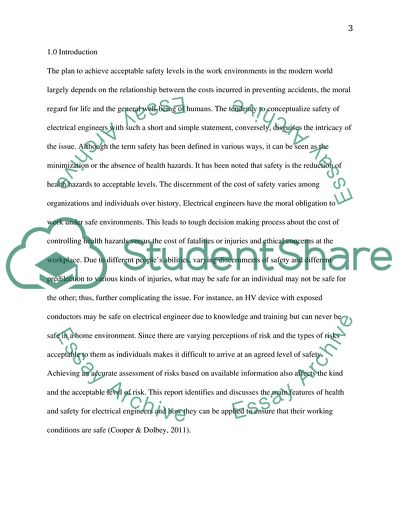Cite this document
(Health and Safety for Electrical Engineers Report Example | Topics and Well Written Essays - 3000 words, n.d.)
Health and Safety for Electrical Engineers Report Example | Topics and Well Written Essays - 3000 words. https://studentshare.org/engineering-and-construction/1808517-health-safety-risk-assessment-for-engineering
Health and Safety for Electrical Engineers Report Example | Topics and Well Written Essays - 3000 words. https://studentshare.org/engineering-and-construction/1808517-health-safety-risk-assessment-for-engineering
(Health and Safety for Electrical Engineers Report Example | Topics and Well Written Essays - 3000 Words)
Health and Safety for Electrical Engineers Report Example | Topics and Well Written Essays - 3000 Words. https://studentshare.org/engineering-and-construction/1808517-health-safety-risk-assessment-for-engineering.
Health and Safety for Electrical Engineers Report Example | Topics and Well Written Essays - 3000 Words. https://studentshare.org/engineering-and-construction/1808517-health-safety-risk-assessment-for-engineering.
“Health and Safety for Electrical Engineers Report Example | Topics and Well Written Essays - 3000 Words”. https://studentshare.org/engineering-and-construction/1808517-health-safety-risk-assessment-for-engineering.


